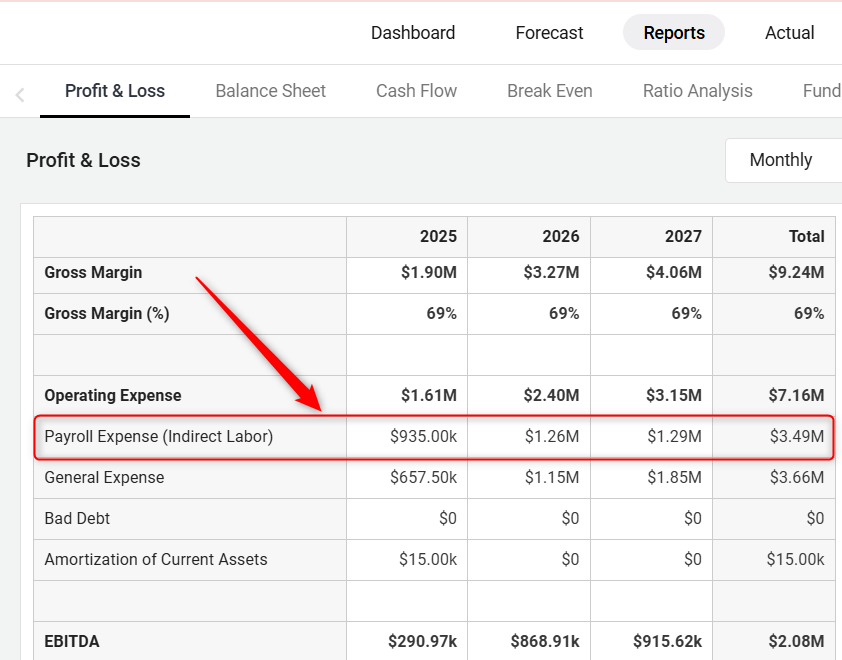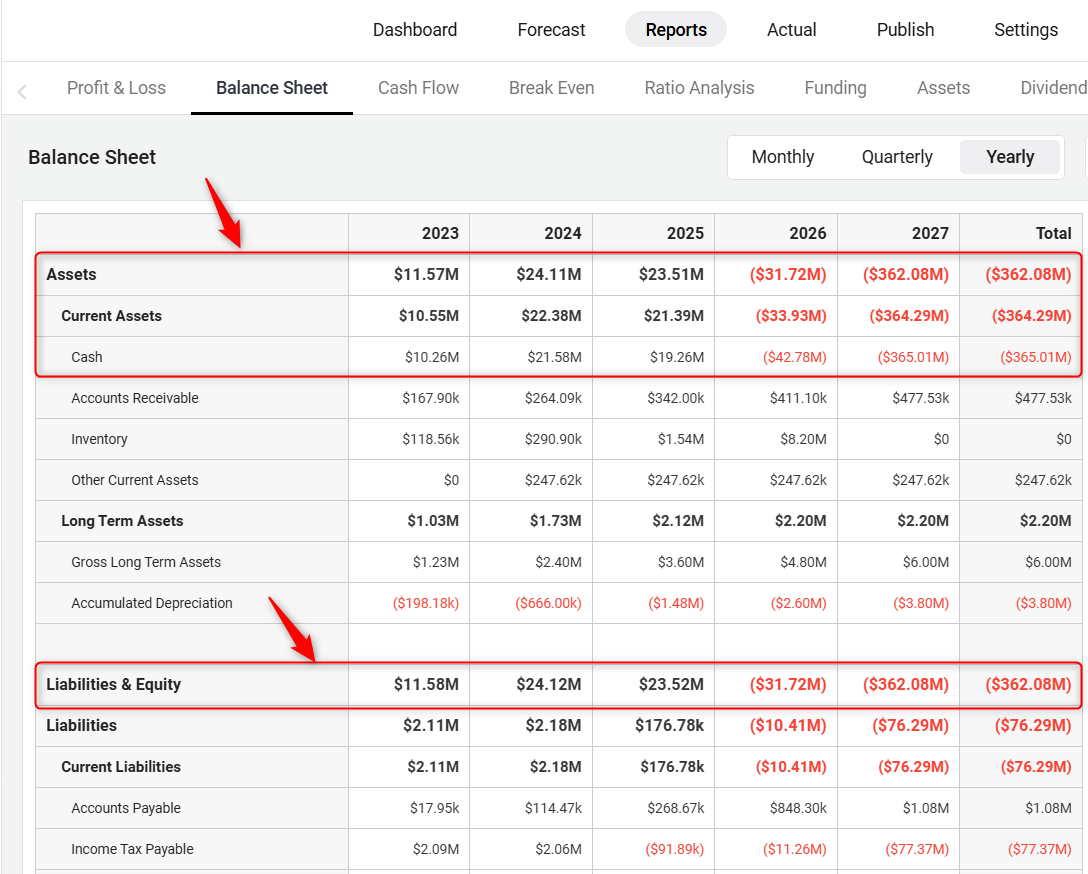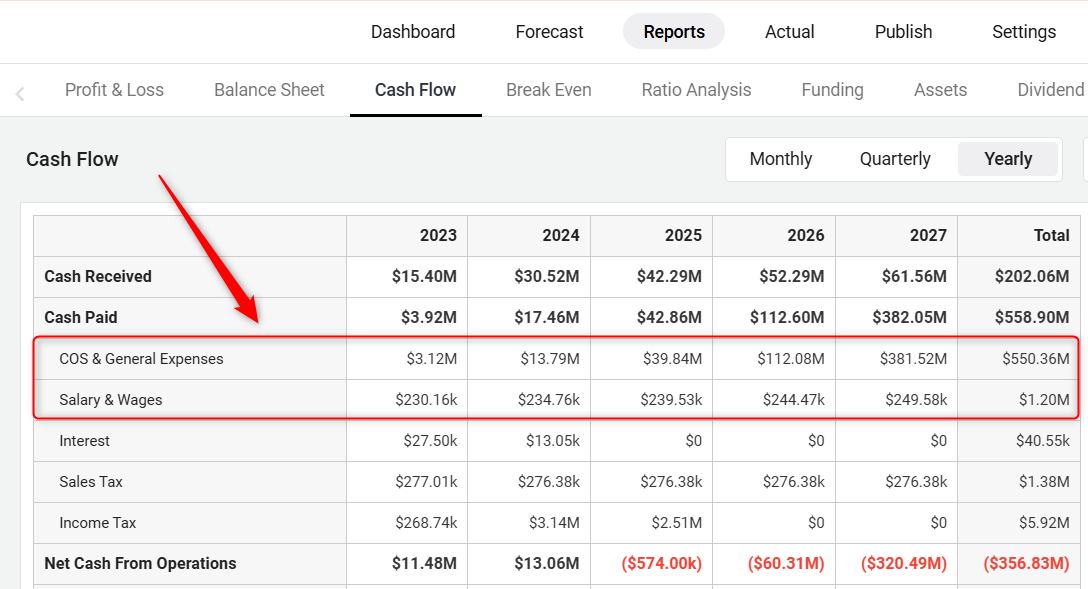Entering personnel: salaries, contracts, or wages
We make it easy to create a customized personnel plan. Simply add groups for each team or department (or however you choose to group employees) and add the specific roles and salaries. The entries you make on the Personnel page of your forecast will give you an opportunity to think through your staffing needs, both now and in the future. The way you represent your staff in the forecast is very flexible. You may wish to list every employee by name or title, or you can also create group entries representing common roles or departments if that makes more sense.
NOTE: If you have no paid employees (as in an all-volunteer nonprofit group, for example), just skip this step.
You can add employees as either Cost of Sales (i.e., Cost of Goods sold or direct labor) or regular personnel expense (i.e.regular labor). Use the Cost of Sales option only for personnel whose salaries are directly related to your revenue. The regular personnel expense option is for staff whose salaries are part of your overhead expenses.
You can also add employees as either on-staff employees or contract workers. You'll pay extra benefits and taxes for on-staff employees, but not for contract workers. As you add on-staff employees, their related benefits and tax expenses (also known as the Burden rate) will be calculated automatically for your financial statements.
NOTE: If you are a one-person business, remember to include a salary for yourself.
Use the quick links below to jump to a section:
Where does this entry appear in the financial statements?
Regular personnel expense and Personnel expense as Cost of sales entries appear in two different locations on the Profit and Loss because they are calculated into your margin differently. A regular personnel expense entry will be calculated into Operating Expenses, as shown below:

A Personnel Expense as Cost of Sales entry, on the other hand, will be calculated into the Cost of Sales, as shown below:

In the Balance Sheet, your personnel entries are calculated as a negative number in your Assets. And then, because the Balance Sheet always has to be in balance, this value will also appear in the Liabilities and Equity portions of the table.

In the Cash Flow statement, your personnel entries are calculated into the lines below:

